Related Research Articles
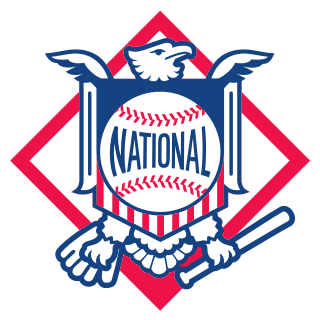
The National League of Professional Baseball Clubs, known simply as the National League (NL), is the older of two leagues constituting Major League Baseball (MLB) in the United States and Canada, and the world's oldest extant professional team sports league. Founded on February 2, 1876, to replace the National Association of Professional Base Ball Players (NAPBBP) of 1871–1875, the NL is sometimes called the Senior Circuit, in contrast to MLB's other league, the American League, which was founded 25 years later and is called the "Junior Circuit". Both leagues currently have 15 teams.
The following is a list of United States Major League Baseball teams that played in the National League during the 19th century. None of these teams, other than Athletic and Mutual, had actual names during this period; sportswriters however often applied creative monickers which are still, mistakenly, used today as "team names" following a convention established in 1951.
The American Association of Base Ball Clubs (AA) was a professional baseball league that existed for 10 seasons from 1882 to 1891. Together with the National League (NL), founded in 1876, the AA participated in an early version of the World Series seven times versus the champion of the NL in an interleague championship playoff tournament. At the end of its run, several AA franchises joined the NL. After 1891, the NL existed alone, with each season's champions being awarded the Temple Cup (1894–1897).
The following are the baseball events of the year 1901 throughout the world.
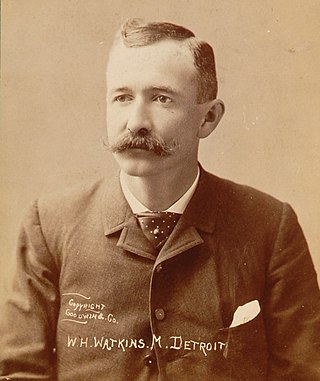
William Henry Watkins, sometimes known as "Wattie," or "Watty," was a Canadian-born baseball player, manager, executive and team owner whose career in organized baseball spanned 47 years from 1876 to 1922.
The Western League was the name of several American sports leagues in Minor League Baseball. This article concentrates on the Western Leagues that operated from 1900 to 1937 and from 1947 to 1958.
The Western Association was the name of five different leagues formed in American minor league baseball during the 19th and 20th centuries.

Lawrence Grant Twitchell was an American professional baseball player from 1886 to 1896. He played nine seasons in Major League Baseball, primarily as an outfielder but occasionally as a pitcher, with seven different major league clubs. His best seasons were spent with the Detroit Wolverines from 1886 to 1888, the Cleveland Spiders in 1889, and the Louisville Colonels from 1893 to 1894.
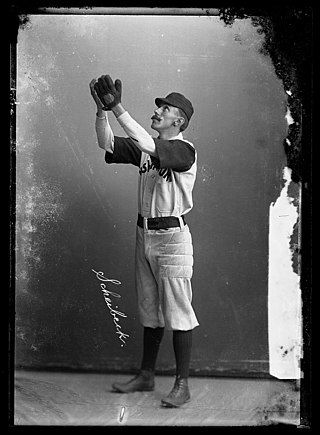
Frank S. Scheibeck was an American shortstop in professional baseball from 1887 to 1906. He played eight seasons of Major League Baseball for the Cleveland Blues, Detroit Wolverines (1888), Toledo Maumees (1890), Pittsburgh Pirates (1894), Washington Senators, and Detroit Tigers (1906).
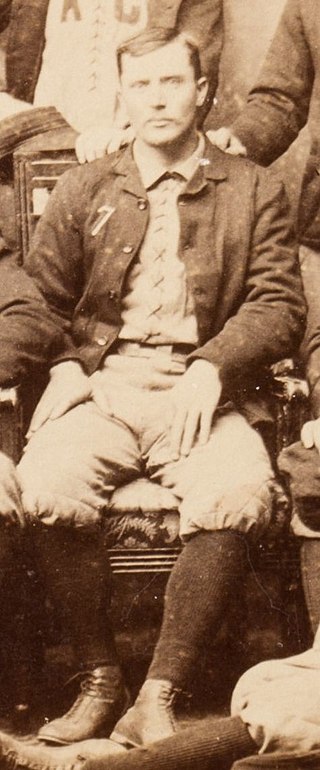
David Elwood Rowe was an American outfielder and manager in Major League Baseball (MLB).
Charles Augustus "Chub" Collins was a Canadian professional baseball player and politician. He played two seasons in Major League Baseball from 1884 to 1885 as a second baseman and shortstop for the Buffalo Bisons, Indianapolis Hoosiers, and Detroit Wolverines. He later served as the mayor of Dundas, Ontario, from 1901 to 1902.

John Emmett Seery was an outfielder in Major League Baseball. He played for the Baltimore Monumentals, Kansas City Cowboys, St. Louis Maroons, Indianapolis Hoosiers, Brooklyn Ward's Wonders, Cincinnati Kelly's Killers, and Louisville Colonels from 1884 to 1892. His first six teams ended their existence in a season in which he played for them. In 916 career Major League games, Seery batted .252 with 893 hits. He was 5 feet, 7 inches tall and weighed 145 pounds.

James B. Donnelly was an American professional baseball player whose career spanned from 1884 to 1900. He played all or part of 11 seasons in Major League Baseball, principally as a third baseman, for nine different major league clubs. In his 11 major league seasons, Donnelly compiled a .230 career batting average and led the National League's third basemen with 73 errors in 1886 and 275 assists in 1887.
The following is a timeline of franchise evolution in Major League Baseball. The histories of franchises in the National Association of Base Ball Players (NABBP), National Association of Professional Base Ball Players (NA), Union Association (UA), and American Association (AA) before they joined the National League (NL) are also included. In 1900 the minor league Western League renamed itself the American League (AL). All of the 1899 Western League teams were a part of the transformation with the Saint Paul Apostles moving to Chicago and to play as the White Stockings. In 1901 the AL declared itself a Major League. For its inaugural major league season the AL dropped its teams in Indianapolis, Buffalo and Minneapolis and replaced them with franchises in Boston, Philadelphia, and Baltimore and the Kansas City Blues moved to Washington to play as the Senators.

C. Frank Genins was a Major League Baseball utility player who played for three seasons. He played for the Cincinnati Reds and St. Louis Browns in 1892, the Pittsburgh Pirates in 1895, and the Cleveland Blues in 1901. His nickname was Frenchy.
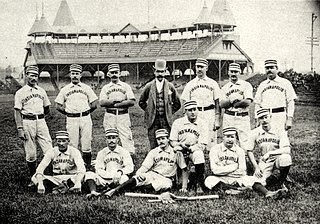
The St. Louis Maroons were a professional baseball club based in St. Louis, Missouri, from 1884–1886. The club, established by Henry Lucas, were the one near-major league quality entry in the Union Association, a league that lasted only one season, due in large part to the dominance of the Maroons. When the UA folded after playing just one season, the Maroons joined the National League. In 1887 the Maroons relocated to Indianapolis and became the Indianapolis Hoosiers, where they played three more seasons before folding.
The Topeka Owls was the primary name of the minor league baseball franchise based in Topeka, Kansas, USA.
The Omaha Packers were a minor league baseball team based in Omaha, Nebraska. Between 1879 and 1935, Omaha minor league teams had a long tenure as members of the Western League and Western Association, winning five league championships. Omaha teams played under numerous other nicknames prior to the becoming the "Packers" in 1930.
The Kansas City Blues was the primary moniker of the minor league baseball teams based in Kansas City, Missouri between 1885 and 1901. The Kansas City minor league teams played as members of the Class A level Western League in 1885 and 1887, the Western Association in 1888, 1890 and 1891, Western League in 1892, Western Association in 1893 and Western League from 1894 to 1899. The Blues transitioned to the American League in 1900, a year before the league became a major league, before returning to the Western League in 1901. The American League Blues evolved into today's Minnesota Twins. The minor league team played under the "Cowboys" moniker in 1885, 1887 and 1894. The Kansas City Blues/Cowboys played home games at Exposition Park.
References
- 1 2 3 4 5 "Western League versus Western Association" (PDF), SABR Minor League Newsletter, June 2002, retrieved October 12, 2009
- 1 2 "What Every Fan Should Know: Ban Johnson and the Birth of the American League". At Home Plate. Archived from the original on June 17, 2008. Retrieved December 26, 2007.
- ↑ "Baseball Chronology – 1885". TheBasebeballLibrary.com. Archived from the original on December 9, 2006. Retrieved October 12, 2009.
- 1 2 3 Madden & Stewart 2002, p. [ page needed ].
- ↑ "1885 Western League". Baseball-Reference.com.
- ↑ Madden & Stewart 2002, p. 9.
- ↑ Madden & Stewart 2002, p. 19.
- ↑ Madden & Stewart 2002, p. 31.
- ↑ Madden & Stewart 2002, p. 32.
- ↑ "Scan of May 17, 1893 article from the Evening Kansan". The Evening Kansan. May 17, 1893. p. 1.
- ↑ Johnson, Lloyd; Wolff, Miles, eds. (2007). The Encyclopedia of Minor League Baseball (Third ed.). Baseball America. ISBN 978-1932391176.
- ↑ Husman, John (2003). Baseball in Toledo. Arcadia Publishing. ISBN 9780738523279.
- ↑ "The Official Site of Minor League Baseball | MiLB.com Homepage". MiLB.com.